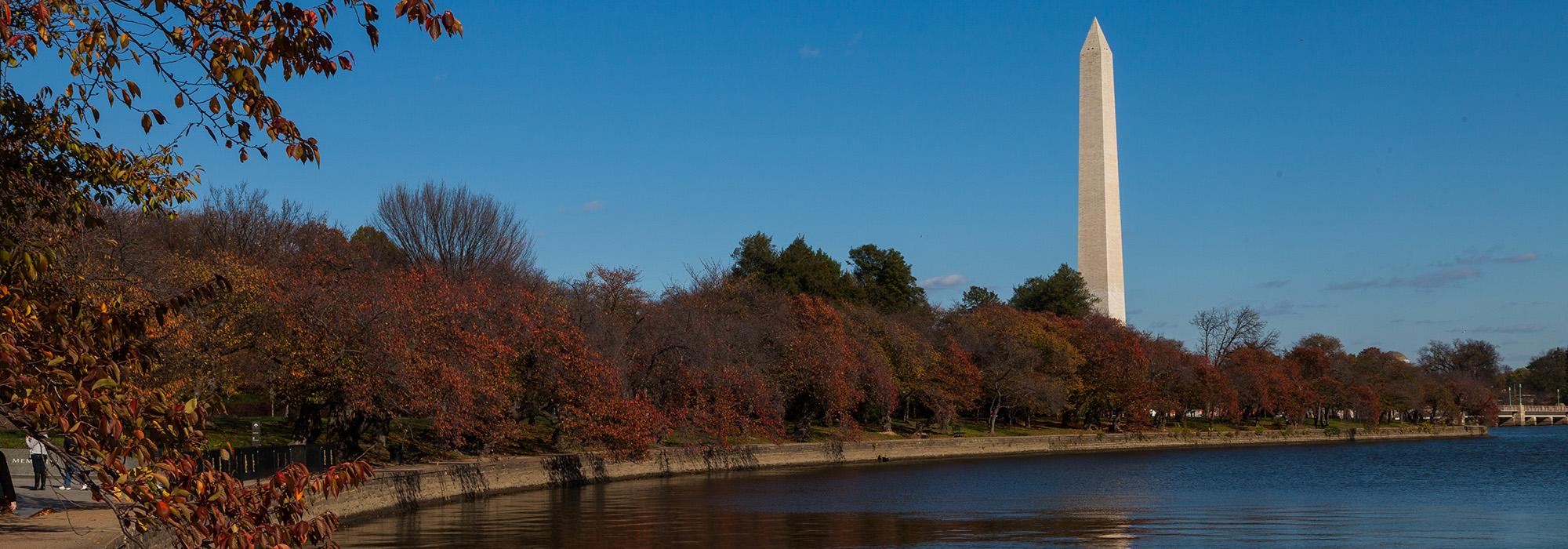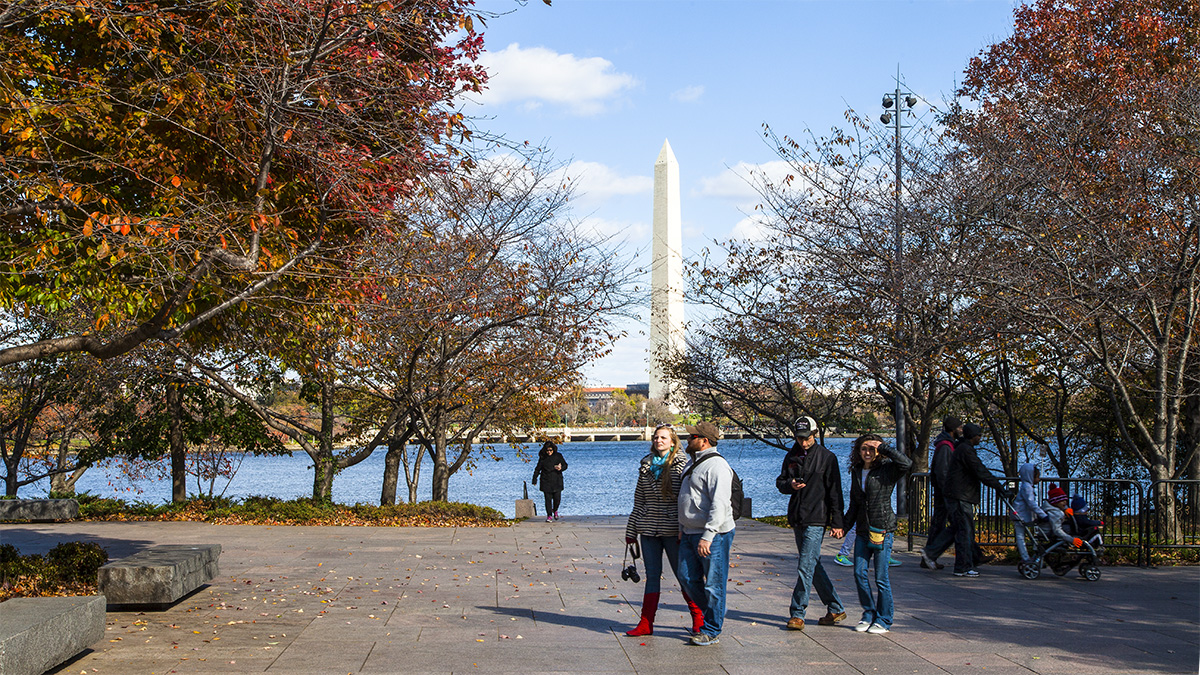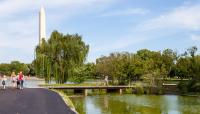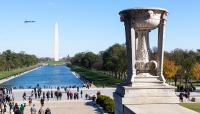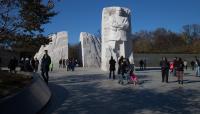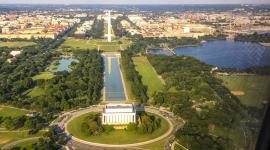Landscape Information
Declared parkland by an act of Congress in 1897, this 400-acre park was formed from tidal flats reclaimed by the U.S. Army Corps of Engineers between 1882 and 1913. Following the Senate Park Commission’s McMillan Plan of 1902, the National Mall’s grand axis was extended through West Potomac Park. The commission’s recommendation to bookend the axis with a future monument was fulfilled by the construction of Henry Bacon’s Lincoln Memorial in 1922. A further axis was created between the White House and the Thomas Jefferson Memorial (1943) on the southern shores of the 107-acre quatrefoil Tidal Basin. Later monumental additions include the D.C. War Memorial by architect Frederick H. Brooke (1931), the Vietnam Veterans Memorial (1982) by architect Maya Lin, the Memorial to the 56 Signers of the Declaration of Independence (1984) by landscape architecture firm EDAW, the Korean Veterans Memorial (1995) by artists Louis Nelson and Frank Gaylord, the Franklin Delano Roosevelt Memorial (1997) by landscape architecture firm Lawrence Halprin & Associates, the George Mason Memorial (2002) by sculptor Wendy Moss and landscape architecture firm Rhodeside & Harwell, the National World War II Memorial (2004) by Friedrich St. Florian and landscape architects Oehme, van Sweden & Associates and the Martin Luther King, Jr. Memorial (2011) by sculptor Lei Yixin and landscape architecture firm ROMA Design Group. Designed by the architecture firm Skidmore, Owings & Merrill and landscape architect Dan Kiley, the Constitution Gardens (1976) is separated from the park’s central axial arrangement by a levee wall built in the 1930s. Plant palettes are varied across the park with native deciduous and upland understory species in the Constitution Gardens, double rows of Dutch elm trees along the Washington Memorial reflecting pool, and Japanese cherry trees lining the Tidal Basin. A twenty-mile-long pedestrian circulation network offers panoramic vistas of nearby monuments and the Potomac River. West Potomac Park was listed in the National Register of Historic Places in 1973 as part of the East and West Potomac Park Historic District.



